Getting Started with AccuRender nXt for Revit
AccuRender nXt for Revit is a powerful add-on to give you more control and flexibility for rendering.
Keywords:
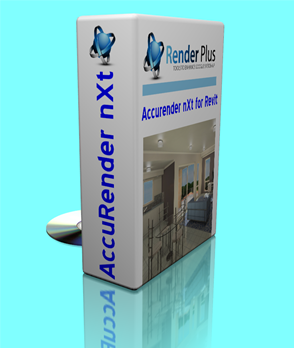
nXtRender for Revit - (AccuRender nXt for Revit) - is offers High Quality, Photo Realistic renderings from Revit with a new integrated rendering Engine.
This is the fastest, best, low-cost renderer for Revit.
To download the latest version of nXtRender for Revit, nXtRender for SketchUp, nXtRender for AutoCAD, or other Render Plus products, visit: Downloads Page
Contents
Features
- You can now change Render Settings and Edit materials from the Render dialog, without having to export or reload the geometry.
- The dialog for setting the Sun position was restored.
- Sun and Sky Settings may now be changed without reloading the geometry into the rendering window, just stop and restart the renderer from the rendering dialog.
- Glow added for materials
- Background images and colors added.
- New Setup Option interface.
- Fixed locations for RPC objects and Trees embedded in Families
- Improved the RPC interface.
- Reduced the delay loading the Map Material and Plant dialogs.
- Added support for the new fractal nXtRender trees.
- Fixed height and width for procedural tile materials
- We now use the Color, Transparency and Reflection from the Revit rendering material for materials not mapped to nXtRender materials.
- Daylight Portal property added to Materials
- Orthographic and Perspective views.
- Revit lights. (They are all treated as point lights in this version. Spot lights and area lights will be added in a later version)
- Sun and Sky settings. (You have to manually set the nXt sun position to match the Revit Sun position. We hope to fix this in a later version.)
- Transparent and colored materials. (The settings are read directly fromt he Revit material.)
- Reflective and Textured materials. (You need to create a nXt material with the desired textures. We hope to read this directly from Revit in a future version.)
Installation
Visit: Downloads Page to download AccuRender nXt for Revit.
- You will need to be an administrator to install AccuRender nXt for Revit.
Select and download the file: AccuRender nXt for Revit. Then, unzip the file and run the installation program that it contains.
During the installation, after installing the program files, a dialog will be displayed to help you configure AccuRender nXt for Revit as an Add-In for the version(s) of Revit that you are running.
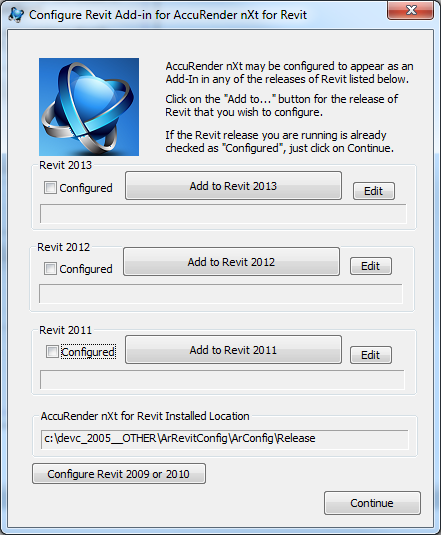
Simply click on the "Add to..." button for the version(s) of Revit that you are running.
For example. if you are running Revit 2013, click on "Add to Revit 2013". The configure button will then be checked for Revit 2013, and AccuRender nXt for Revit will appear as an Add-In on the Revit Add-In bar the next time that you run Revit 2013.
If you are running Revit 2009 or Revit 2010, click on "Configure Revit 2009 or 2010". You will then be prompted to specify where Revit is installed, by browsing the the Revit.exe file in the Revit folder, so that we can add the necessary lines to the corresponding Revit.ini file for that version.
- For example, the Revit.exe file is normally located in “Program Files\Revit Architecture 2009\Program” or “Program Files (x86)\Revit Architecture 2009\Program”. Once you find and select the Revit.exe file and click on "Open", you should get a message box indicating a successful configuration.
After selecting and configuring the version(s) of Revit that you are running, click "Continue" to complete the installation.
Notes:
- AccuRender nXt for Revit only works with Revit versions 2009 through 2013.
- On Vista and Windows 7: Revit will likely need to run as an administrator in order to load its plug-ins. You can do this temporarily, by right-clicking on the Revit icon and selecting “Run as Administrator”. You can also change any Revit shortcut to always run as an administrator by right-clicking on the shortcut, selecting Properties…, going to the Shortcut tab, clicking Advanced, and finally checking Run as Administrator.
Starting nXt
For Revit 2010 through Revit 2013

- Open Revit and load a model. An additional menu item, Add-Ins should appear.
- Make sure you are not in a Camera or Perspective View*
- Select Add-Ins, and the Add-Ins Ribbon should appear, with the External Tools button.
- Select nXt From the External Tools drop-down list, and the Control Panel should appear as shown above.
- Revit Add-Ins can only be activated in non-perpspective views. You can switch back to the perspective view later, after loading the Add-In and the Control Panel. Just leave the Control Panel visible, so that you can render the perspective view.
For Revit 2009

- Open Revit and load a model. An additional menu item, nXt should appear.
- Load a non-perspective 3D view, so that the nXt menu items are enabled.
(You can switch back to perspective later.) - From the nXt menu, choose Control Panel.
- Revit 2009 Add-In Menu items can only be activated in non-perpspective views. You can switch back to the perspective view later, after loading the Control Panel. Just leave the Control Panel visible, so that you can render the perspective view.
Documentation
In addition to the notes below, see: Table of Contents - AccuRender nXt for Revit
Video Tutorial
- AccuRender nXt Simple Rendering Video Tutorial
Control Panel

The AccuRender nXt for Revit icons on the Control Panel are:
Render Model, using the current 3D view.
You decide when to Stop the rendering—it will continue refining the picture until you stop it. Try rendering a small to medium sized model first—before you throw something very large at it.
Load Setup Options Tab Dialog. Set rendering options.
Load Sun Position Dialog. Set the sun position.
Load Materials Dialog. Map a nXt material to a Revit material with the same name.
Load Plants Dialog. Map an AccuRender Plant to a Revit family, by family name.
Note: If you wish to render a non-perspective view, select the view while leaving the Control Panel visible.
You can leave the control panel up while selecting different models and views. AccuRender nXt for Revit will always render the currently active model and view.
Setup Options Tab Dialog
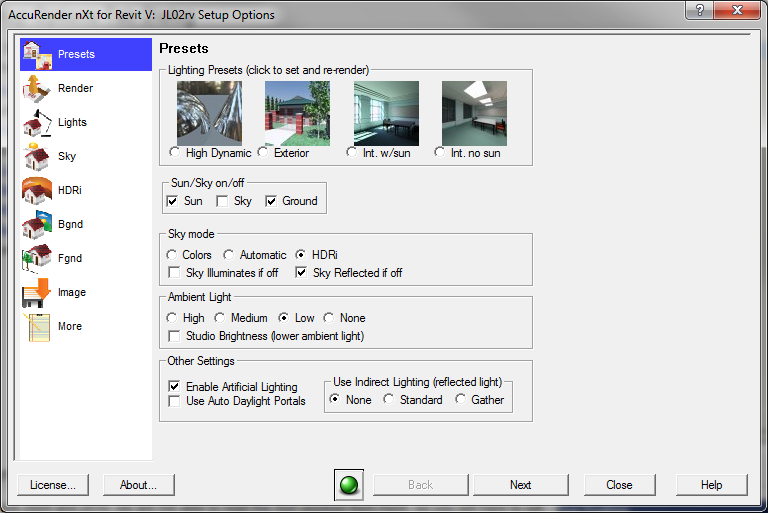
The Setup Options dialog is used for rendering settings in AccuRender nXt for Revit. Settings are grouped in the following tabs:
- Lighting Presets
- Rendering Setup
- Render 2
- Lighting Setup
- HDRI Sky Setup
- Background Setup
- Special Setup
- Image Setup
- More Setup
Sun Position Dialog
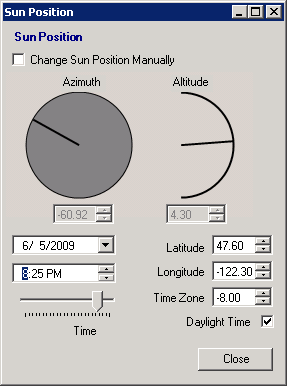
We are not able to read the Sun position from Revit yet, so you will have to set the sun again before using AccuRender nXt for Revit.
Materials Dialog
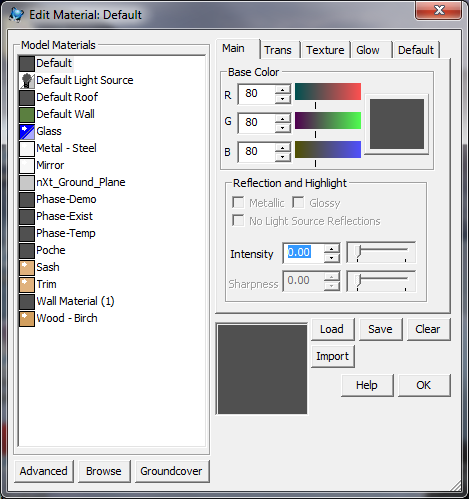
You can create a nXt Material for any of the Revit Materials in your drawing.
Select a Revit Material on the left and click Edit to define the nXt Material to match it.
The nXt Material will have the same name as the Revit Material.
Plants Dialog
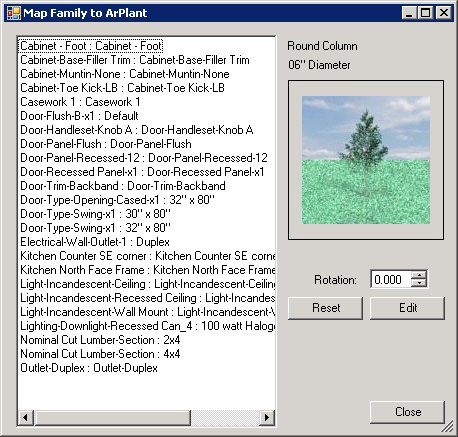
You can use the Plants dialog to map AccuRender Plants to families by name.
